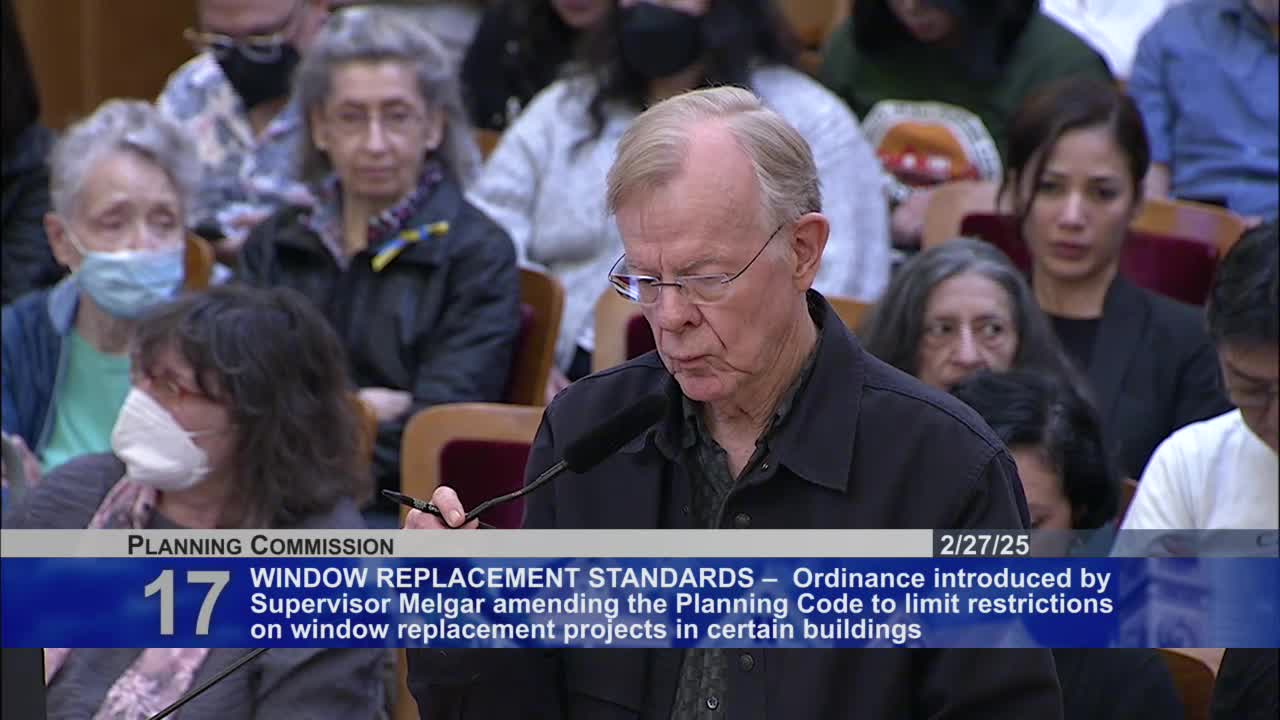San Francisco proposes flexible window replacement options amid historic preservation concerns
February 27, 2025 | San Francisco City, San Francisco County, California
Thanks to Scribe from Workplace AI and Family Portal , all articles about California are free for you to enjoy throughout 2025!

This article was created by AI using a video recording of the meeting. It summarizes the key points discussed, but for full details and context, please refer to the video of the full meeting. Link to Full Meeting
Patrick Hoffman, a local resident, raised critical questions about the abrupt shift in planning policies that had long opposed vinyl windows. He expressed confusion over the lack of public understanding regarding which historic buildings would remain exempt from new regulations, emphasizing the need for better outreach and education on the matter. Hoffman highlighted the environmental benefits of wooden windows, noting their longevity and retrofitting potential compared to the shorter lifespan of vinyl options.
Other residents echoed similar sentiments, urging the city to respect the Historic Preservation Commission's authority before making any decisions. They argued that the aesthetic and historical integrity of San Francisco’s neighborhoods could be compromised by allowing vinyl windows, which many believe detract from the city’s architectural charm. One speaker poignantly compared the appearance of a house to one’s hairstyle, suggesting that just as a bad haircut can diminish one’s appearance, unattractive windows can negatively impact a home’s visual appeal.
Supervisor Malgaard, who introduced the legislation, defended the proposal by stating that it aims to provide property owners with more flexibility in choosing materials that are cost-effective and energy-efficient. She argued that the legislation does not mandate the use of vinyl but rather allows it as an option, particularly for less historically significant buildings. Malgaard emphasized the need to adapt to changing environmental conditions and rising energy costs, suggesting that the legislation could help homeowners make more sustainable choices.
Commissioners engaged in a robust debate, weighing the benefits of modern materials against the preservation of the city’s historic fabric. Some voiced support for diversifying window materials, citing the potential for improved energy efficiency and reduced costs for homeowners. Others cautioned against compromising the visual character of historic neighborhoods, advocating for a careful balance between modernization and preservation.
As the meeting concluded, it was clear that the conversation surrounding window replacement regulations in San Francisco is far from over. The community remains divided, with strong feelings on both sides regarding the future of the city’s architectural identity and environmental responsibility. The outcome of this legislation could significantly impact not only the aesthetics of San Francisco’s neighborhoods but also the broader conversation about sustainability and historic preservation in urban planning.
Converted from City of San Francisco - Video Open Video Only in Windows Media Player - Feb 27, 2025 meeting on February 27, 2025
Link to Full Meeting
Comments
View full meeting
This article is based on a recent meeting—watch the full video and explore the complete transcript for deeper insights into the discussion.
View full meeting
